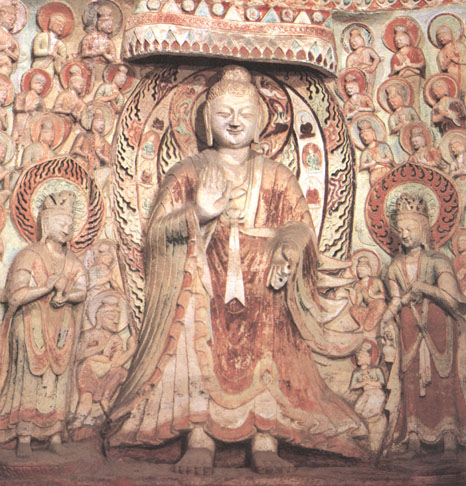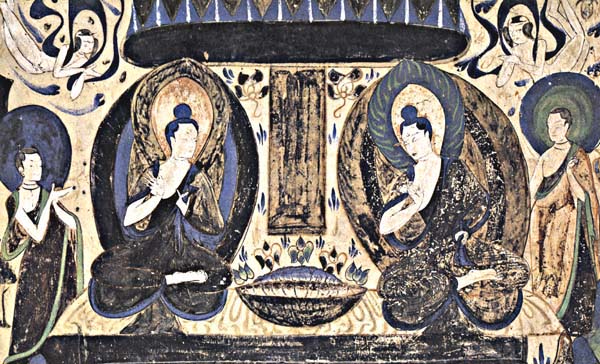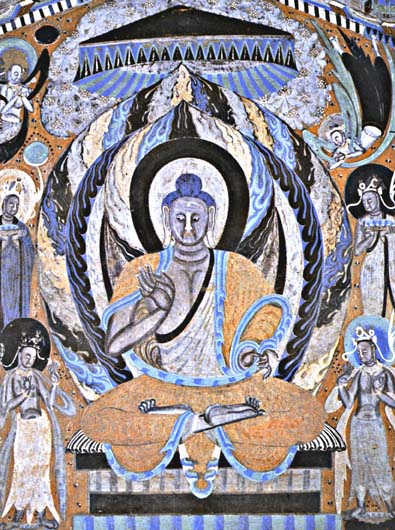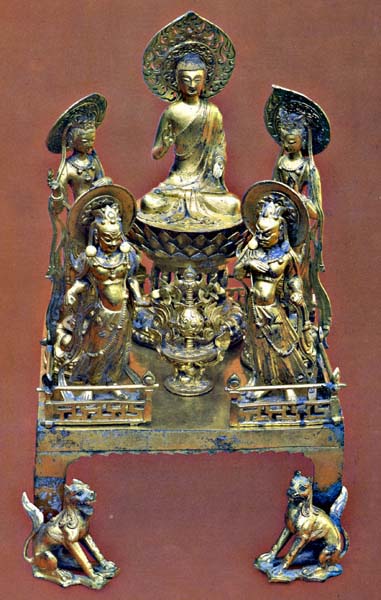
|
Most of the time, people viewed Buddhist images not individually, but in assemblages. This was true both on the altars of temples and in the shrines people had in their homes. In looking at assemblages of Buddhist figures, it is important to notice differences in size and relative placement. |
||
|
What do you notice about size, posture, and position in this grouping of images in a Dunhuang cave temple?
What is the effect of placing the Buddha in an assemblage? |
||
|
||
Below are two sections of Western Wei (6th century) murals from Dunhuang. The first one is of two Buddhas flanked by two Bodhisattvas with two apsaras floating above, the other of the Buddha expounding his teachings. He is surrounded by similar figures.
What do you notice about the layouts of these two pictures? |
||
|
|
||
|
||
|
Besides the central placement of the Buddha figure, what other visual clues identify him as the Buddha? List the features.
Can you identify the Bodhisattva and apsara figures?
What do you notice about the brushstrokes used to paint the figures?
|
||
|
||
|
Look closely at each figure in this bronze shrine. Identify each and tell what details are particular to this shrine.
|
||
|
||
|
Move on to Temples |



